LTO traffic signs and symbols are essential tools for regulating traffic, providing important information, and ensuring the safety of all road users. They serve to guide, warn, and instruct drivers and pedestrians, helping to maintain order on the roads and prevent accidents. Understanding these signs is crucial for complying with traffic laws and for making informed decisions while driving or walking.
Knowing traffic signs and symbols helps to avoid legal penalties imposed by authorities like the Land Transportation Office (LTO) and ensures smoother traffic flow, reducing the risk of accidents and congestion. Ignorance of these signs can lead to violations, accidents, and potentially severe consequences for public safety. The law mandates that all road users must adhere to these signs, and failure to do so can result in fines, penalties, or even more serious legal repercussions.
LTO Traffic Signs and Symbols
LTO traffic signs and symbols are standardized visual cues used on roads to communicate important information to drivers and pedestrians. These signs include regulatory signs, warning signs, directional signs, and informative signs, each serving a specific purpose to ensure road safety and efficient traffic management. Regulatory signs, for example, inform road users of laws and regulations, while warning signs alert them to potential hazards ahead.
These symbols are designed to be easily recognizable and universally understood, using shapes, colors, and pictograms to convey messages quickly and effectively. For instance, a red octagon universally signifies a stop sign, while a yellow triangle warns of potential dangers. The detailed and consistent use of these signs ensures that all road users, regardless of language or background, can navigate roads safely and follow traffic rules.
Complete List of LTO Traffic Signs and Symbols in the Philippines
Understanding the LTO traffic signs and symbols is necessary to ensure safety and order on Philippine roads. These signs which are designed to communicate important information to drivers and pedestrians, guiding, warning, and regulating road use, are also things that every driver needs to know to avoid getting in trouble with the law. Knowing these signs and symbols also help them avoid penalties which can be quite troublesome to settle.
Here, we provided a comprehensive list of the most common traffic signs and symbols, categorized for easy reference, along with detailed descriptions and purposes.
1. Regulatory Signs
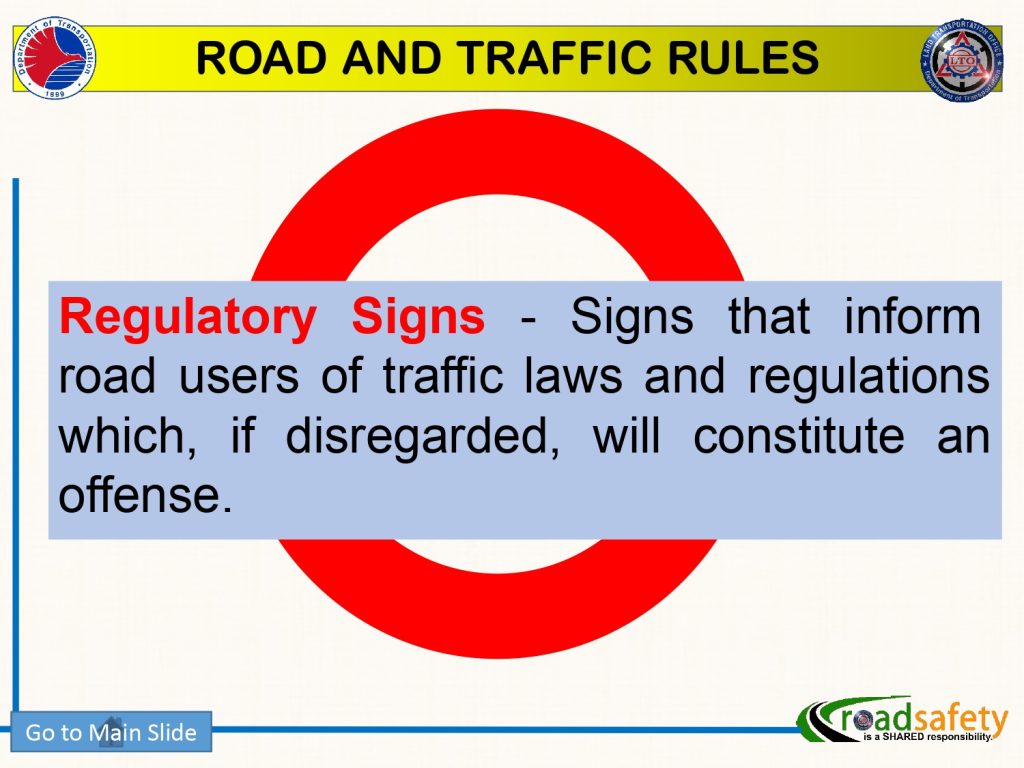
Regulatory signs inform drivers of laws and regulations that must be followed. They dictate actions, such as speed limits and parking rules, to ensure traffic flow and safety. Common examples include speed limit signs, stop signs, and no parking signs. These signs are legally enforceable and non-compliance can result in fines or penalties.
They are typically rectangular or square and use a white or red background with black or red symbols or text. They often feature clear, concise directives, such as “STOP” or “NO ENTRY.” Regulatory signs are commonly found at intersections, along roadways, and in parking areas.
- Stop Sign: A red octagon indicating that drivers must come to a complete stop at the designated stop line.
- Yield Sign: An inverted triangle instructing drivers to yield to oncoming traffic or to the vehicles on the right side of the intersection.
- No Entry: A red circle with a horizontal white bar, indicating that entry is prohibited for all vehicles.
- Speed Limit: Signs showing the maximum (or minimum) speed allowed in kilometers per hour.
- No Parking: A red circle with a diagonal line over a “P”, indicating areas where parking is prohibited.
- No U-Turn: A red circle with a diagonal line over a U-turn arrow, are signs displayed to indicate that U-turns are prohibited in the area.
- No Overtaking: A red circle with a diagonal line over two cars, indicating overtaking is not allowed.
- Seat Belt Use: A sign indicating the mandatory use of seat belts in compliance with RA 8750.

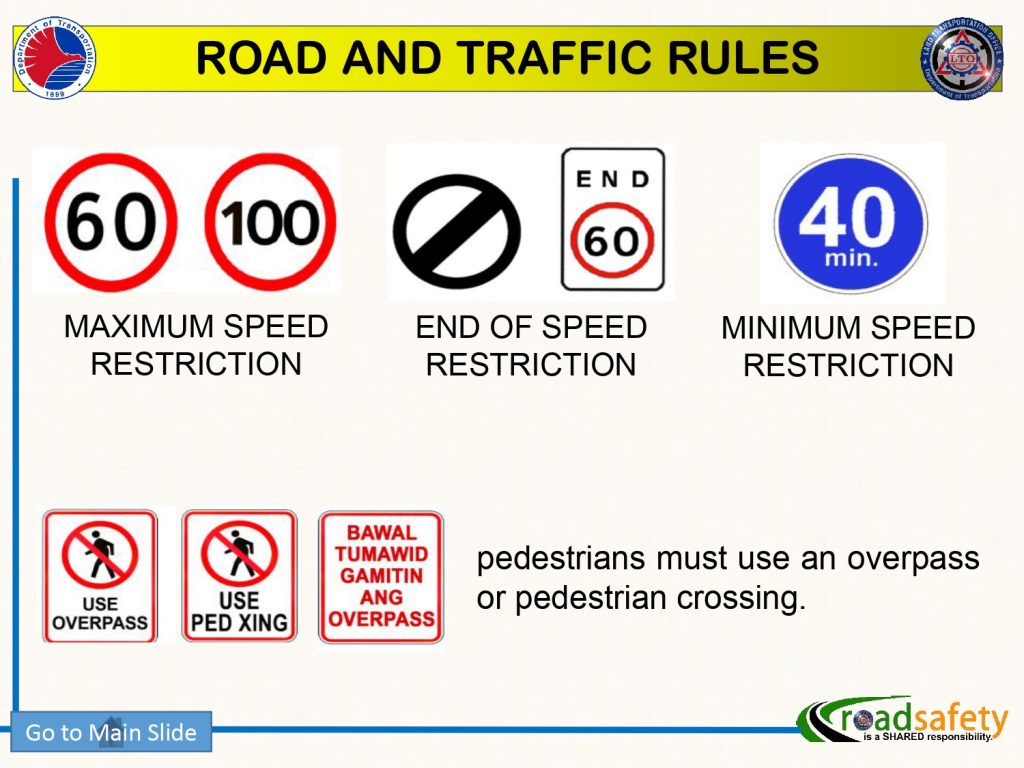
2. Warning Signs
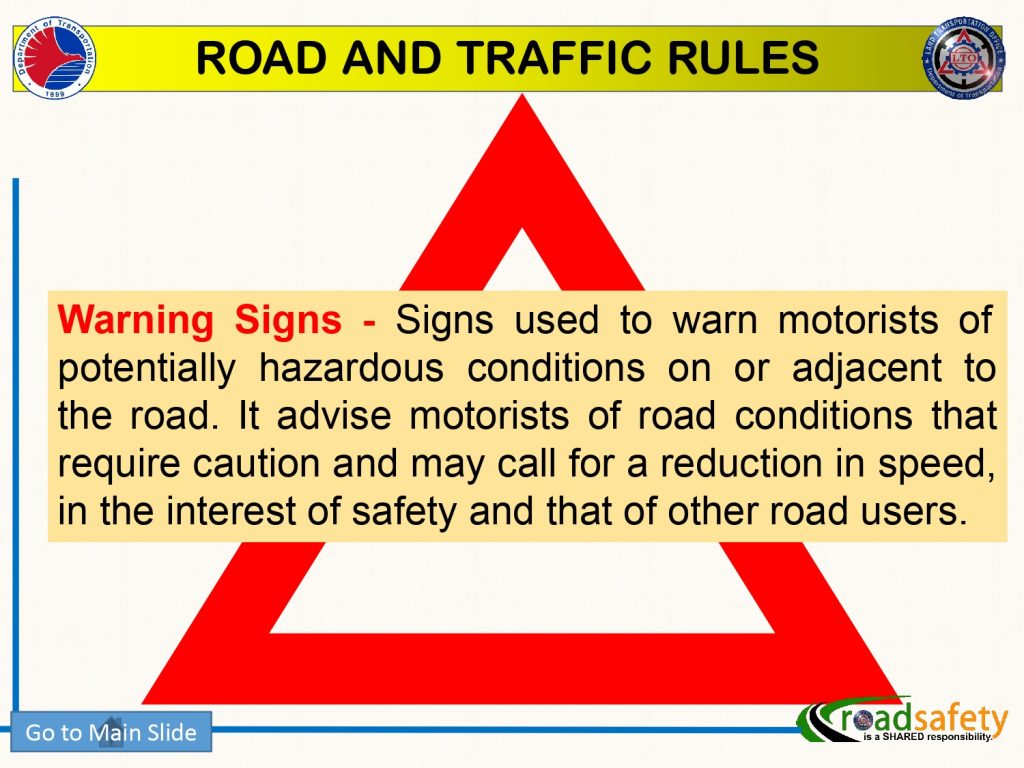
Warning signs alert drivers to potential hazards or changes in road conditions ahead. They are designed to help prevent accidents by providing advance notice of dangers such as curves, construction zones, or pedestrian crossings. Examples include sharp turn signs, construction warning signs, and pedestrian crossing warnings. These signs are meant to prepare drivers for unusual or unexpected conditions.
They are typically diamond-shaped with a yellow or orange background and black symbols or text. They are placed in areas where caution is required due to a change in road conditions. Warning signs are commonly found in areas with potential hazards or near construction zones.
- Curve Signs: Yellow diamonds with curved arrows, indicating curves, sharp turns, and winding roads ahead.
- Intersection Signs: Yellow diamonds with symbols of different types of intersections such as T-junctions, Y-junctions, and roundabouts.
- Pedestrian Crossing: A yellow diamond with a pedestrian figure, alerts drivers that a pedestrian may be crossing ahead.
- Railroad Crossing: A yellow diamond with a train symbol, warning of a railroad crossing ahead
- Road Narrows: A yellow diamond indicating that the road ahead narrows.
- Slippery Road: A yellow diamond with a car and skid marks, indicating slippery conditions due to rain or other factors.
- Animal Crossing: A yellow diamond with an animal symbol, warning of areas where animals frequently cross the road.
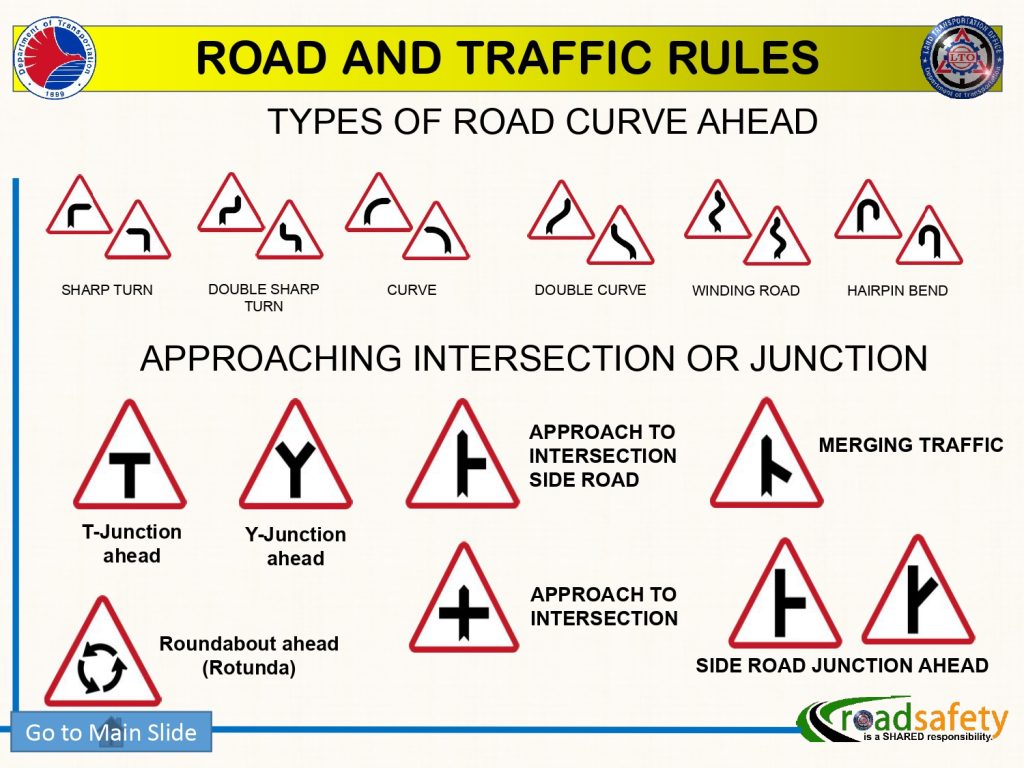

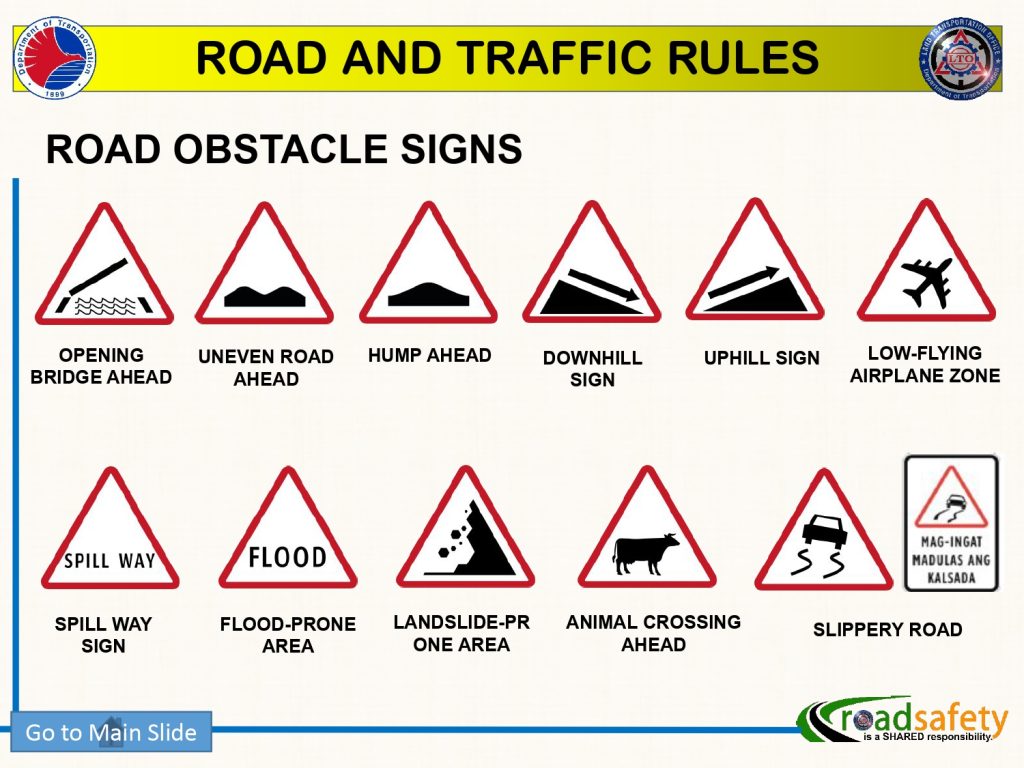
3. Directional Signs
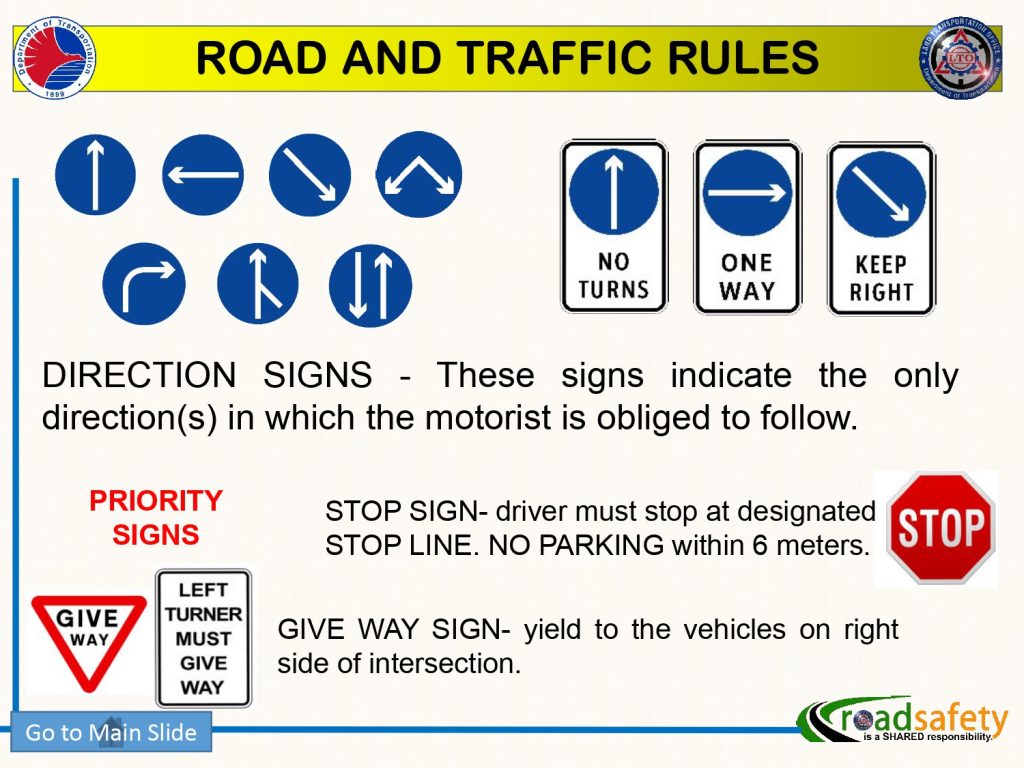
Directional signs provide guidance on navigation, helping drivers understand which way to go to reach specific destinations or follow certain routes. They often include information about routes, exits, or the direction to particular places. Examples are exit signs on highways, directional arrows, and signs pointing to landmarks. These signs are essential for effective route planning and navigation.
They are typically rectangular or arrow-shaped, using colors like green for guidance, blue for services, and brown for recreational areas. They display information such as exit numbers, road names, or direction arrows. Directional signs are commonly found on highways, intersections, and major roads.
- One-Way Signs: Rectangular signs with arrows indicating that the traffic flows in one direction only on this road.
- Turn Signs: Signs indicating mandatory directions in which vehicles must turn, such as left turn only or right turn only.
- Advance Direction Signs: Signs providing information on the direction to take before the upcoming intersections or exits.
- Reassurance Direction Signs: Signs showing approximate distances to a particular exit or specific destinations.
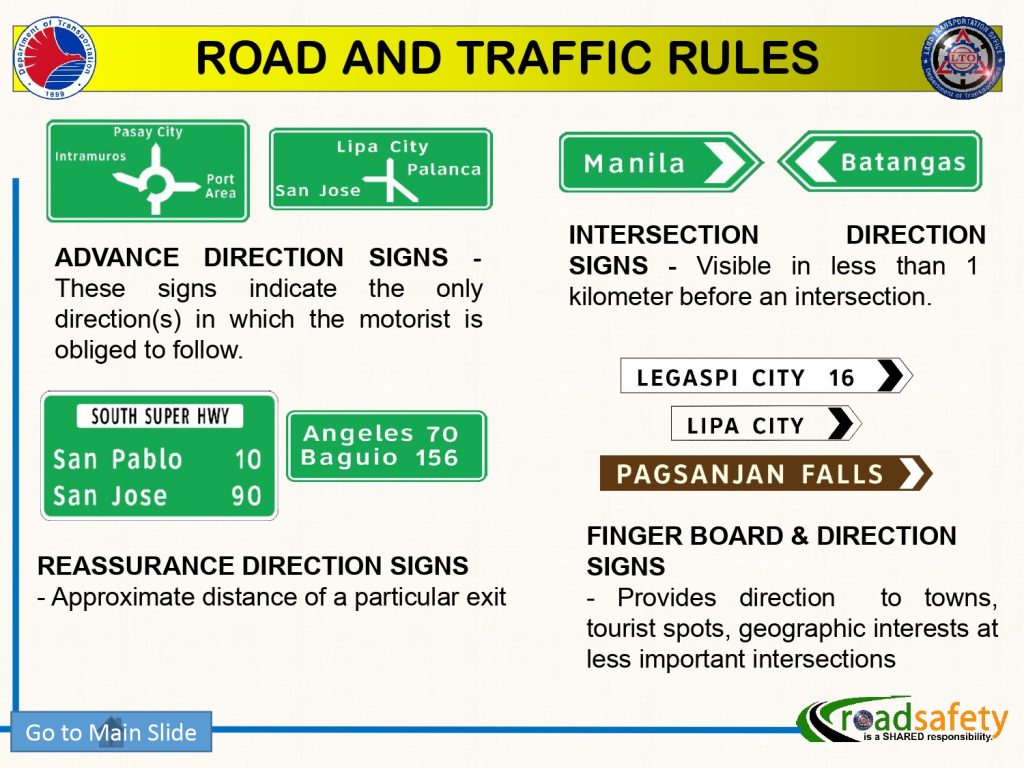
4. Informative Signs
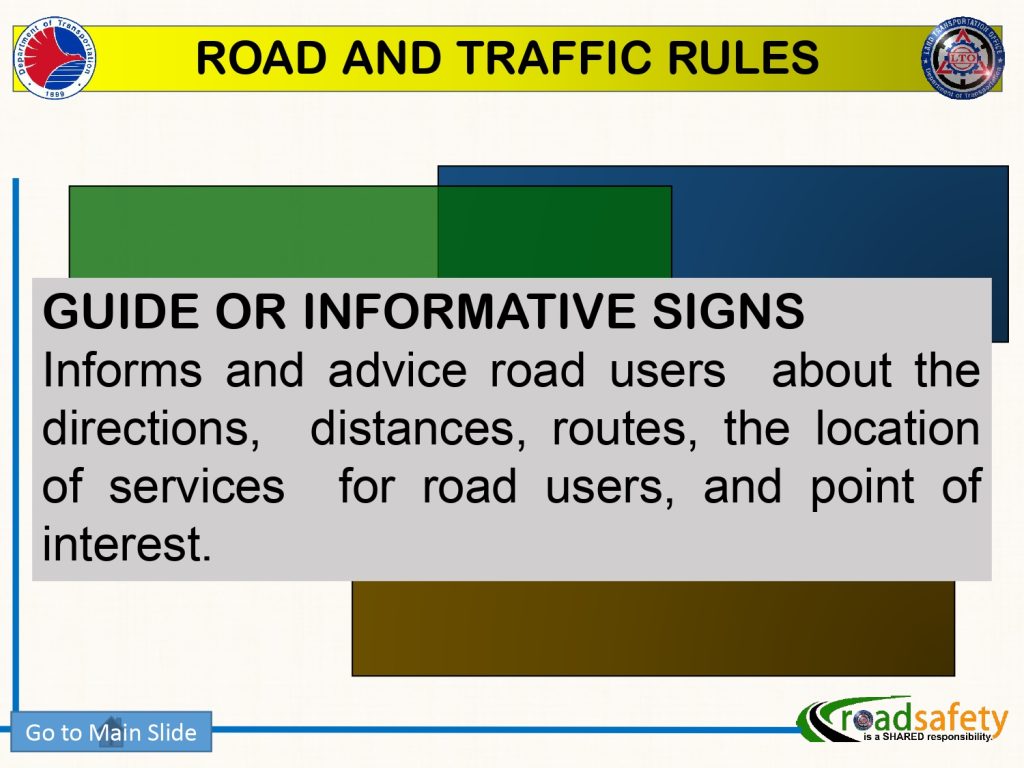
Informative signs offer general information about the road or nearby facilities rather than directing or regulating traffic. They include information about points of interest, services available, or road conditions. Examples are signs indicating tourist information centers, rest areas, or historical sites. These signs aim to assist drivers by providing helpful information about their surroundings.
They often use a variety of colors and symbols to convey different types of information, such as blue for services and brown for tourist information. The design includes text or pictograms providing relevant details. Informative signs are typically found on highways, near rest areas, and around points of interest.
- Hospital: A blue sign with a white “H”, indicating the location of hospitals or medical services.
- Gas Station: A blue sign with a fuel pump icon, showing the location of gasoline stations.
- Parking Area: A blue sign with a white “P”, indicating designated parking areas.
- Accommodation: Signs showing the location of hotels, motels, and other lodging facilities.
- Tourist Information: Signs indicating tourist spots and points of interest.
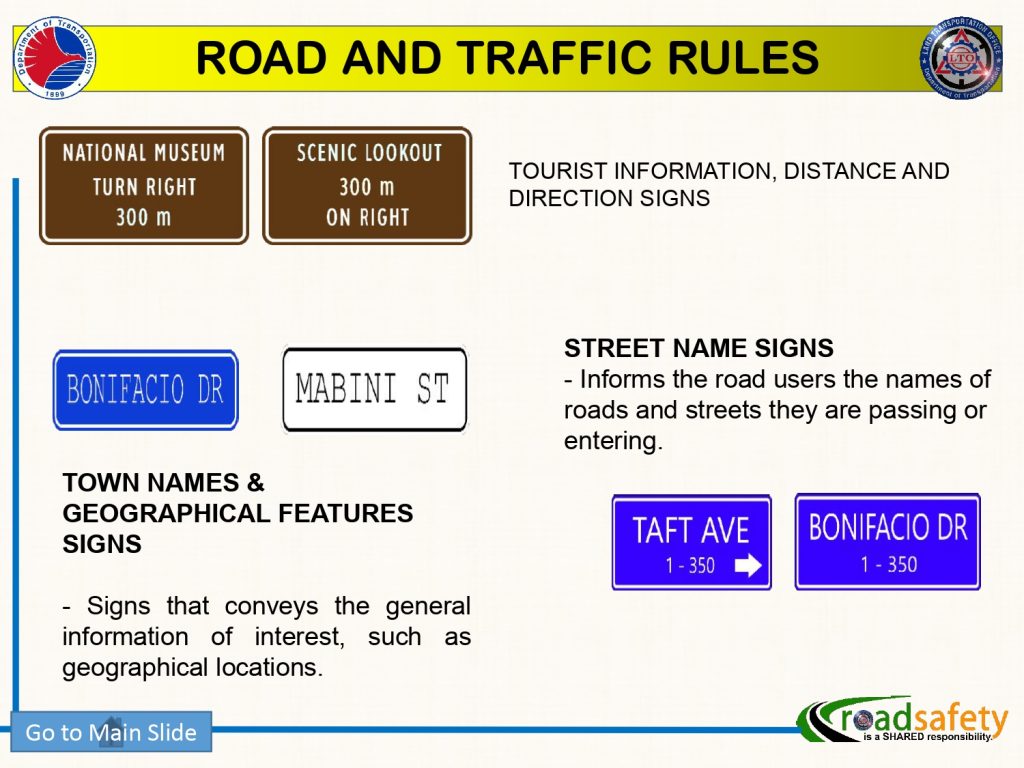
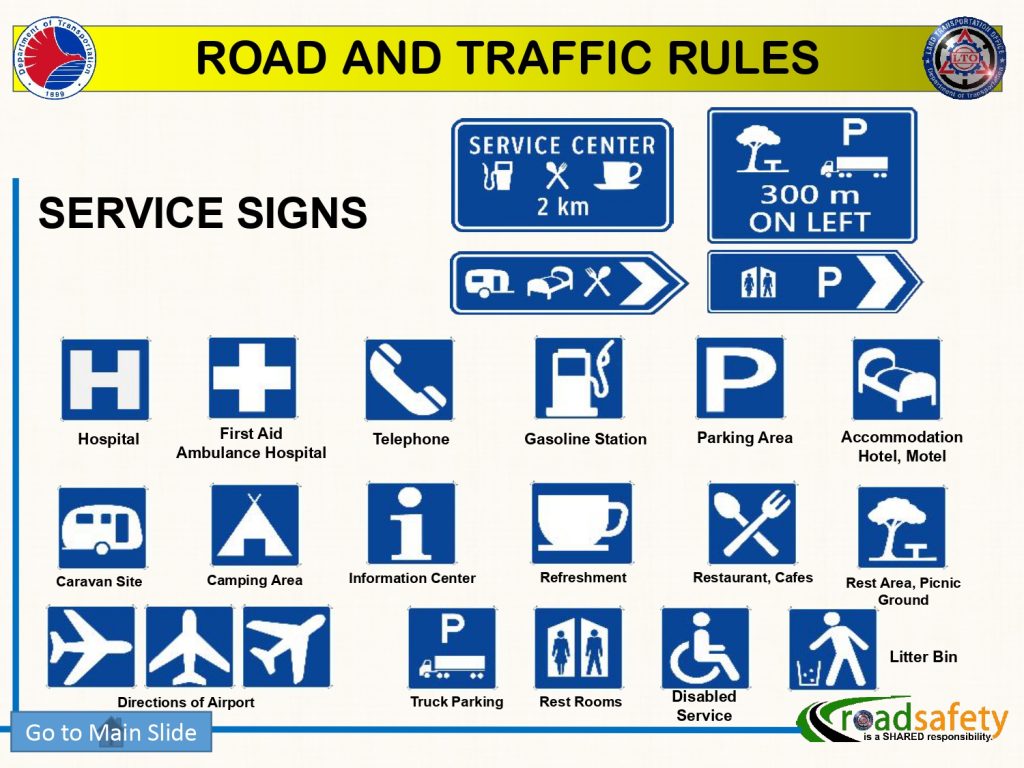
5. Road Markings
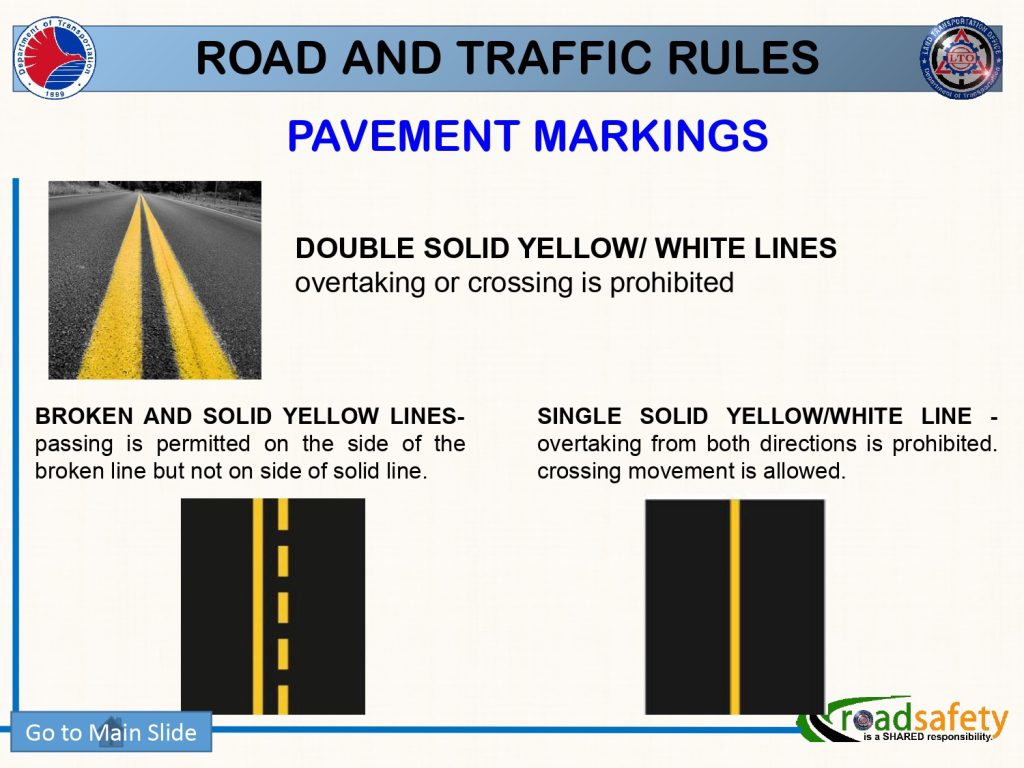
Road markings are painted lines and symbols on the road surface that convey important traffic control information and guide vehicle movements. They include lane lines, crosswalks, and symbols indicating parking areas or bus lanes. Examples are solid or dashed lane lines and pedestrian crossing markings. Road markings help organize traffic flow and ensure safe driving practices.
They are painted in various colors, such as white for lane boundaries and yellow for no-parking zones. The markings can be solid lines, dashed lines, or symbols. Road markings are commonly found on all types of roads, especially at intersections, pedestrian crossings, and lane boundaries.
- Lane Lines: White or yellow lines indicating the separation of traffic lanes.
- Pedestrian Crossings: White stripes marking designated pedestrian crossing areas.
- No Parking Zones: Often marked with yellow or red curbs to indicate where parking is prohibited.
- Bus and PUJ Lanes: Lanes specifically designated for buses and public utility jeeps.
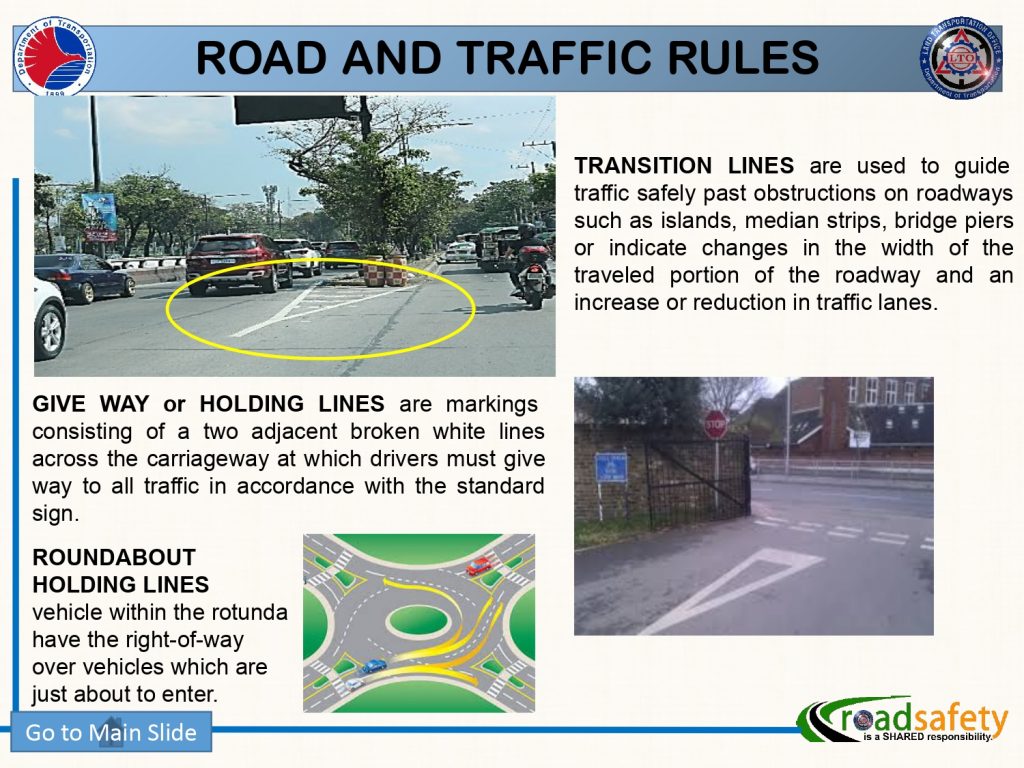

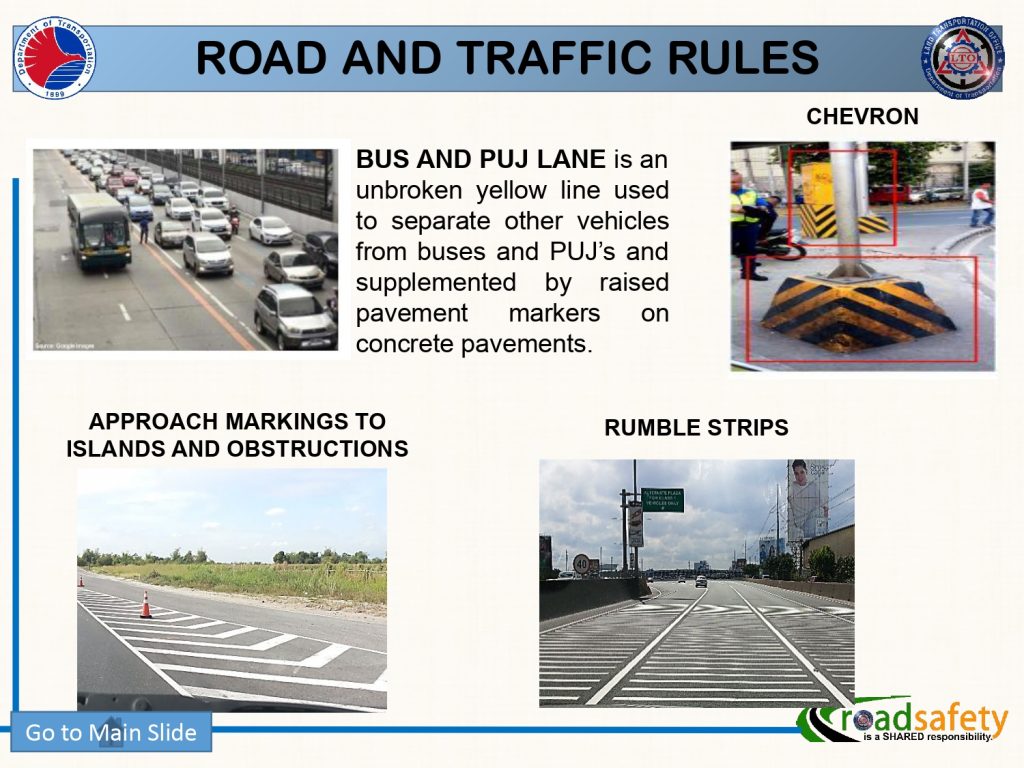
6. Traffic Lights and Signals
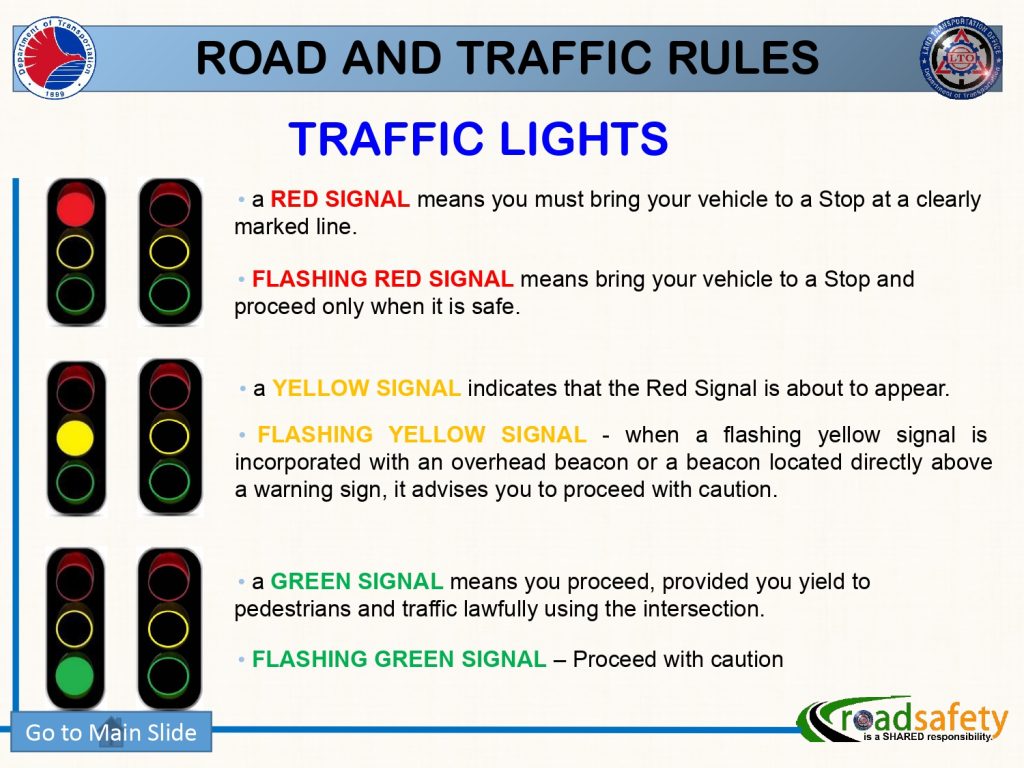
Traffic lights and signals control and manage vehicle and pedestrian movements at intersections and along roadways. They include both the physical signs, like stop and yield signs, and electronic signals, such as traffic lights. Examples are red, yellow, and green traffic lights and stop signs. They are critical for maintaining orderly and safe traffic flow.
Traffic lights are typically made of metal or plastic, while signals are usually electronic with colored lights. Signs include symbols or text, while signals use color changes to convey instructions. Traffic lights and signals are commonly found at intersections, pedestrian crossings, and busy roadways.
- Red Light: Requires vehicles to stop.
- Yellow Light: Warns that the signal is about to change to red and that the drivers must exercise caution.
- Green Light: Allows vehicles to proceed, yielding to pedestrians.
- Flashing Yellow Light: Advises drivers to proceed with caution.
- Flashing Red Light: Requires vehicles to stop and proceed only when it is safe.
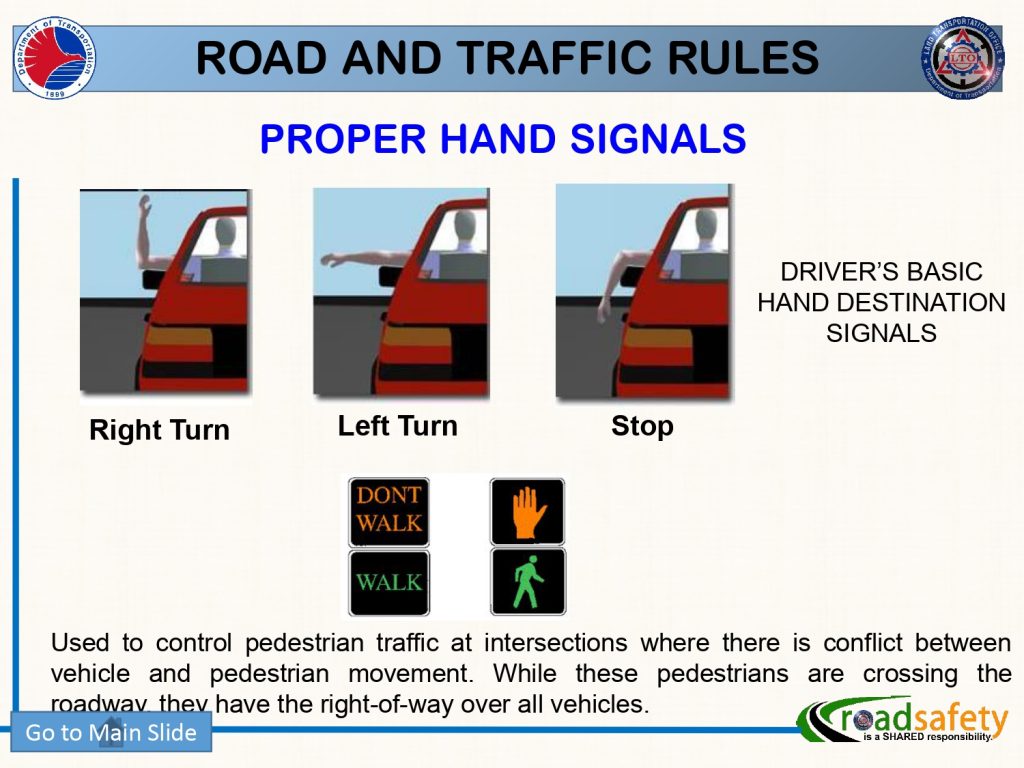
7. Hazard Markers
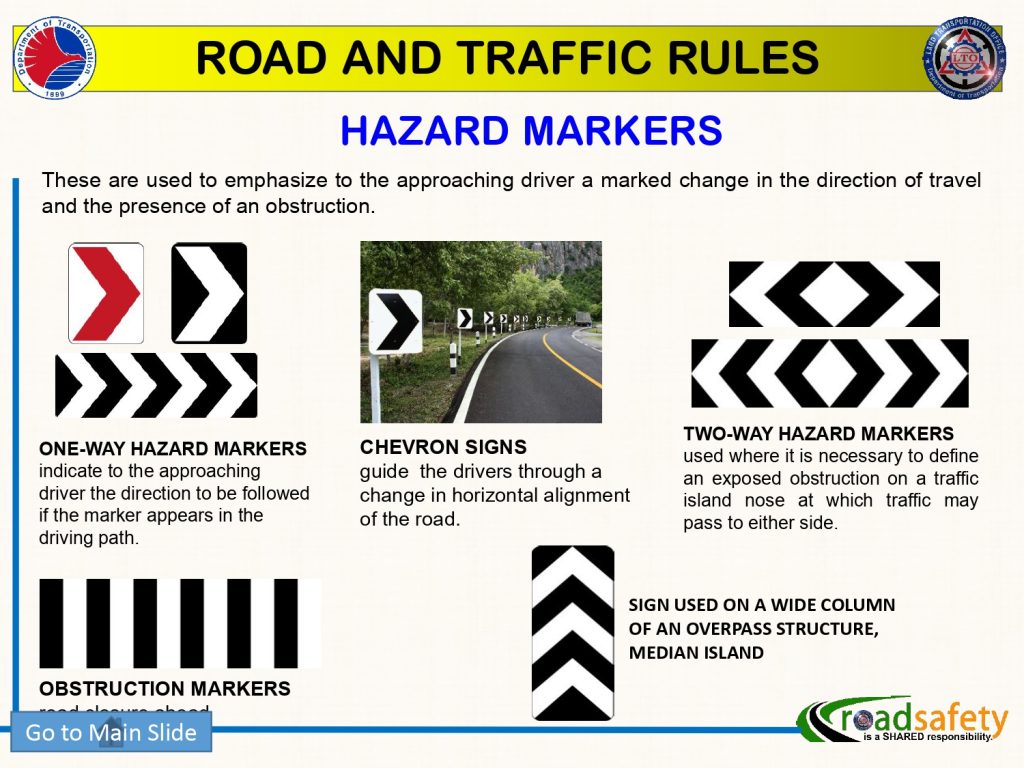
Hazard markers are used to alert drivers to specific dangers or obstacles on the road that may not be immediately visible. They help prevent accidents by marking hazards such as road defects, narrow bridges, or obstacles. Examples include reflective markers for curves or obstructions and warning beacons for low clearances. Hazard markers provide visual cues to increase driver awareness of potential dangers.
They often use bright colors, reflective materials, or distinctive shapes to stand out and draw attention. Common colors include yellow, orange, or red with black patterns or symbols. Hazard markers are typically placed near dangerous or unusual road features, such as sharp turns or narrow passages.
- Chevron Signs: Black and white striped signs that guide drivers through changes in road alignment.
- Obstruction Markers: Signs indicating the presence of obstructions like traffic islands or bridge piers.
- Width Markers: Signs showing the narrow width clearance, often near bridges.
- One-way hazard markers: These signs indicate the direction to be followed at the end of the road
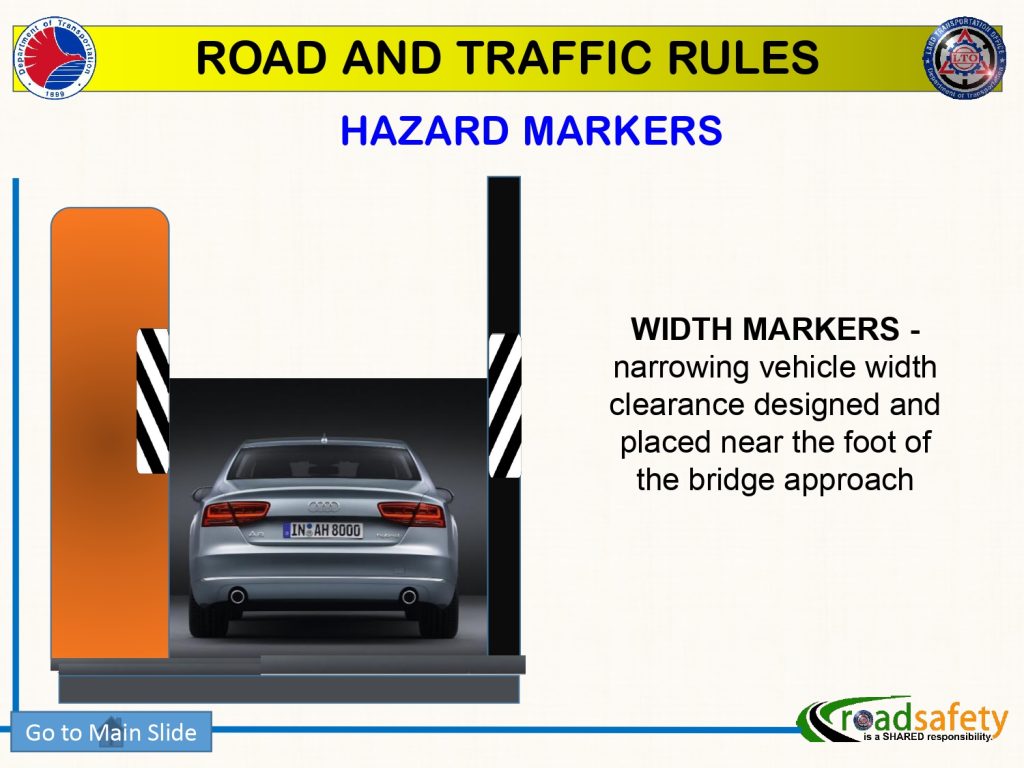
These signs and symbols are critical for maintaining road safety, ensuring smooth traffic flow, and preventing accidents. Adherence to these signs is mandated by law, and failure to comply can result in fines and penalties, emphasizing the importance of familiarizing oneself with them.
Importance of Traffic Signs and Symbols
Traffic signs and symbols play a crucial role in maintaining road safety and ensuring efficient traffic flow. They provide essential information to road users, guiding, warning, and regulating the movement of vehicles and pedestrians. Understanding and obeying these signs is vital for preventing accidents and complying with traffic laws.
- Traffic signs alert drivers to potential hazards, helping to prevent accidents and injuries.
- Signs manage the movement of vehicles and pedestrians, reducing congestion and improving traffic efficiency.
- Directional and informative signs help drivers navigate roads, find services, and reach their destinations efficiently.
- Adhering to traffic signs and symbols helps avoid fines, penalties, and other legal consequences.
- Pedestrian-specific signs and crossings ensure the safety of individuals walking near or across roads.
- Warning signs keep drivers alert to changes in road conditions, upcoming intersections, and other critical information.
- Clear and consistent signage aids emergency responders in reaching locations quickly and efficiently.
- Proper signage contributes to a more organized and predictable driving environment, reducing stress and confusion for drivers.
Understanding the importance of these signs is crucial for all road users to maintain a safe and orderly transportation system.
Video: LTO Traffic Signs and Symbols Review
Traffic signs and symbols are fundamental for maintaining safety and order on the roads. They provide critical information, guide road users, and help prevent accidents by clearly communicating rules and warnings. Understanding these signs is essential for all drivers and pedestrians to ensure a safe and efficient transportation system. Watch this video from Jeff Ski and see how well you know your traffic signs and symbols today.
Summary
LTO traffic signs and symbols are essential for regulating traffic, providing information, and ensuring the safety of all road users in the Philippines. These signs, categorized into regulatory, warning, directional, and informative types, help guide, warn, and instruct drivers and pedestrians, promoting smooth traffic flow and preventing accidents. Understanding and obeying these signs is crucial for avoiding legal penalties and maintaining an orderly and safe road environment.